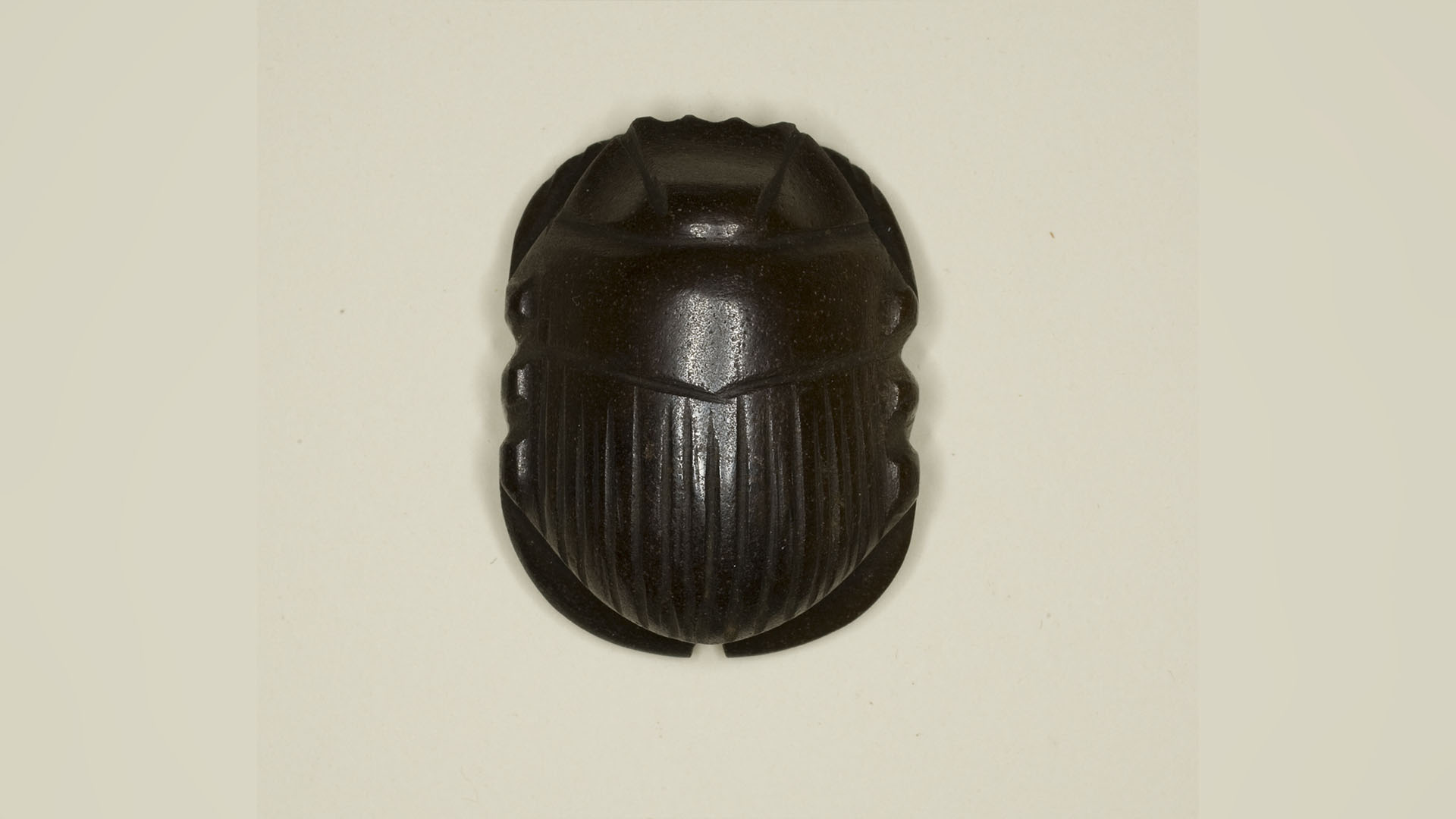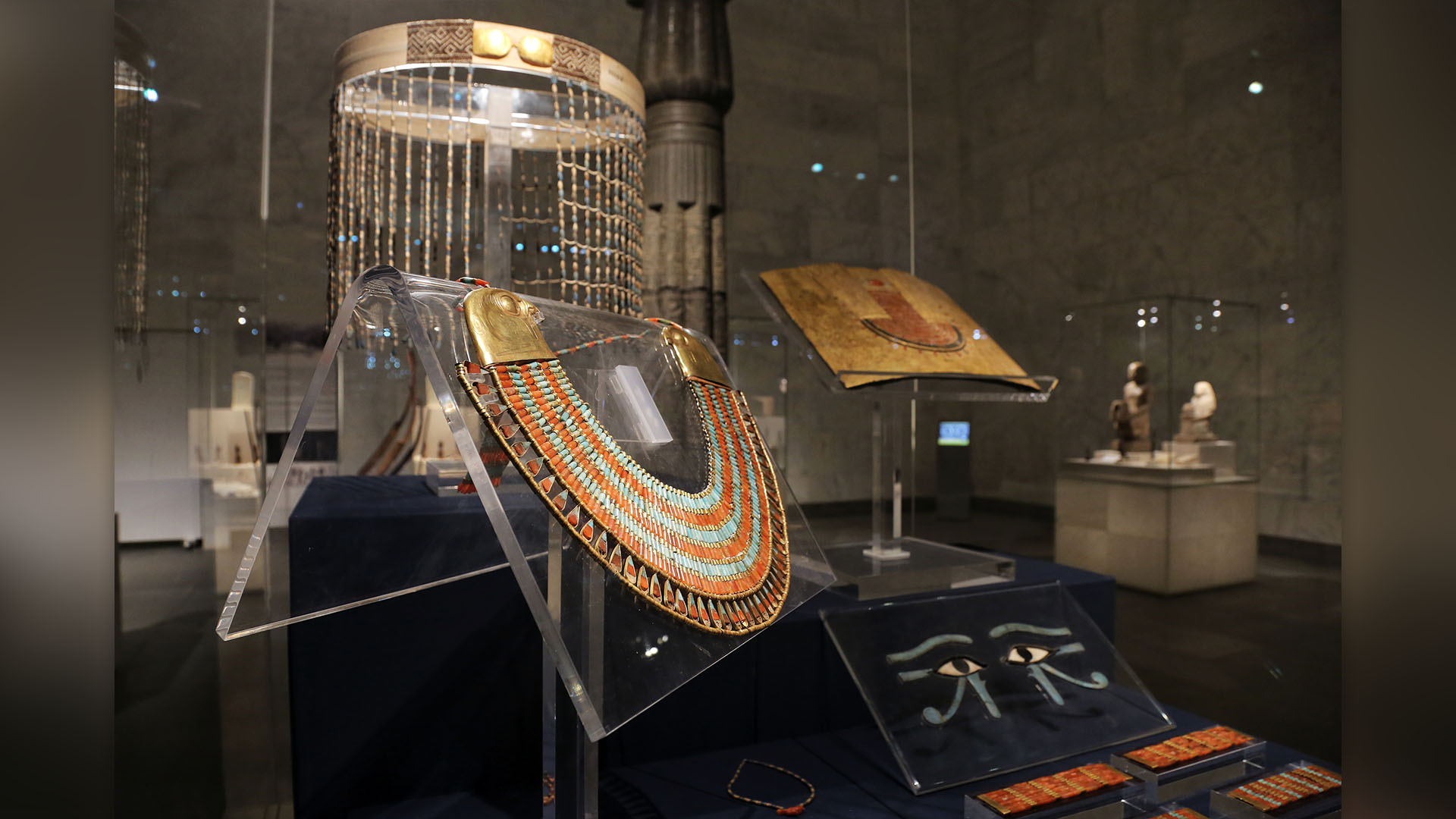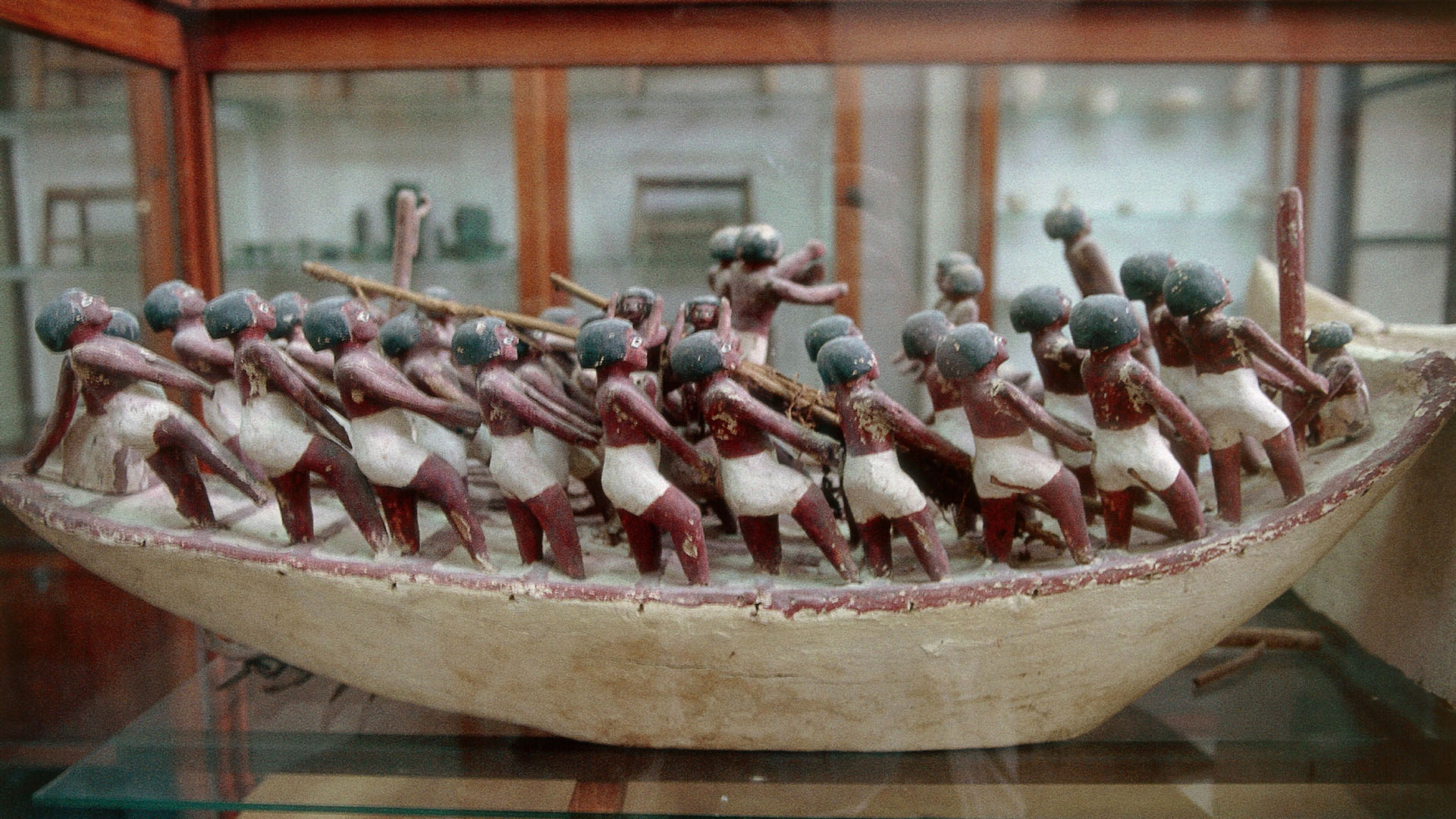
The ancient Egyptians are known for their lavish and complex burials. Over the centuries, archaeologists have found a variety of grave goods and decorations that were included in these millennia-old tombs. Here are 13 grave goods that keep turning up in Egyptian burials, including shabti figurines, meant to work for the deceased in the afterlife, and mummy portraits that offer lifelike pictures of the dead.
Copies of the "Book of the Dead"

The "Book of the Dead" is a modern-day name given to a series of texts that the ancient Egyptians sometimes buried with the deceased. They called these texts the "Book of Coming Forth by Day," and the texts, which were meant to help the dead navigate the afterlife. The content in the different texts varied but they often described what the ancient Egyptians believed could be encountered in the afterlife, such as the weighing-of-the-heart ceremony, in which a person's deeds were weighed against the feather of the goddess Maat, a deity associated with justice.
Sarcophagi
Ancient Egyptians were sometimes buried in sarcophagi decorated with illustrations. Sometimes, these elaborate coffins have hieroglyphs that name the deceased and provide prayers for them. Just like modern nesting dolls, sarcophagi could include multiple sarcophagi housed within each other, with the mummified body at the center.
Depending on the wealth of the individual, the sarcophagi could be made of expensive material. For instance, the sarcophagi of Tutankhamun were made with large amounts of gold.

Mummy portraits
Mummy portraits show vivid images of the deceased. Examples painted on wooden panels were created between the middle of the first century and the middle of the third century A.D., while examples painted on shrouds kept being created through the fourth century, Susan Walker, an honorary curator and former keeper of antiquities at the Ashmolean Museum at the University of Oxford, told Live Science in an email.

These portraits were affixed to the mummified remains of the deceased. The use of mummy portraits was particularly popular in the towns and villages of the Fayum, although examples have been found elsewhere in Egypt, Walker said.
Shabti figurines

Shabti (also known as ushabti) figurines were meant to work for the deceased in the afterlife. Depending on the tomb, a person could be buried with hundreds of shabtis. A simple shabti could be made out of ceramic, while more elaborate shabtis were gilded with gold.
"The figures were typically inscribed with a spell to magically animate them in the afterlife and were depicted with tools in hand and a basket slung over the shoulder, ready to do any tasks required of the deceased in the afterlife," Peter Lacovara, director of the Ancient Egyptian Archaeology and Heritage Fund, wrote in his book "The World of Ancient Egypt: A Daily Life Encyclopedia" (Greenwood Publishing Group, 2016).
Canopic jars

Canopic jars held some of the organs of the deceased that were removed during the mummification process. Each organ, such as the lungs, liver, intestines and stomach, had their own jar according to the Metropolitan Museum of Art in New York City.
The ancient Egyptians considered each organ to be protected by one of the four sons of the falcon-headed god Horus. The lungs were protected by Hapy (or Hapi), the liver by Imsety, the stomach by Duamutef and the intestines by Qebehsenuef, the museum notes. The jars, in turn, were sometimes placed in a canopic chest. A famous example is from the tomb of Tutankhamun, in which the four jars were placed in an alabaster chest.
Golden tongues

Golden tongues were sometimes buried with Egyptian mummies during the Greco-Roman period (332 B.C. to A.D. 395). The Egyptians may have placed the golden tongues in mummies so that they would be able to speak to deities in the afterlife. Additionally, the ancient Egyptians believed that the flesh of the gods was made of gold.
Wall paintings

Wall paintings sometimes decorated the tombs of affluent ancient Egyptians. Artists painted a variety of motifs, including portraits of the deceased, depictions of the gods, images of the deceased venerating the gods, and paintings of people mourning the deceased.
Artwork in tombs sometimes also showed images of daily life in Egypt, as well as plants, animals and wildlife. They could even feature images of athletic events, such as wrestling and dancing. Hieroglyphs were sometimes drawn next to the wall paintings and provided information on who was buried in the tomb and what they did during their life.
Scarab

Amulets in the shape of scarab beetles were sometimes buried with the deceased in ancient Egypt. "The sacred scarab was believed by the Egyptians to be what moved the sun across the sky, much like the scarab beetle moved a ball of dung on the sand," Gene Kritsky, a professor emeritus of biology at Mount St. Joseph University who has researched and written about Egyptian scarab amulets, told Live Science in an email.
"Small funerary [scarab] amulets were carved on the underside showing the beetle's legs. Some were carved so accurately that they could be identified to species," Kritsky said. "These scarabs were stitched into the mummy linen, and served as protection for the deceased," Kritsky noted, adding that thousands of scarabs have been found in Egypt.
Statues

The ancient Egyptians sometimes placed statues in tombs. In some cases, these statues depicted deities. For instance, in January 2024, archaeologists announced that they'd found a statue depicting Harpocrates, a childlike Greek god associated with silence, inside a tomb dating to around 2,000 years ago at Saqqara. They may have been placed to demonstrate the religious devotion of the deceased.
Other times, statues showed the deceased and their families. For instance, in April 2023, archaeologists announced that they had found a 3,300-year-old tomb at Saqqara that belonged to a man named Panehsy. Inside, they found a statue of Panehsy and his family carved in relief.
Jewelry

A wide variety of jewelry — including necklaces, rings and brooches — was buried with the deceased in ancient Egypt. The wealthier the individual, the more elaborate the jewelry.
For instance, Tutankhamun's tomb contained a large amount of jewelry, including elaborate pectorals, a type of jewelry that was sometimes placed near a person's chest. The design of two of the pectorals in the boy king's tomb were very elaborate and included depictions of winged scarab beetles, poppy flowers and lunar crescents, Susan Allen, a senior research scholar at the Metropolitan Museum of Art, wrote in her book "Tutankhamun's Tomb: The Thrill of Discovery" (Met Publications, 2006).
Animal mummies

Animal mummies were sometimes included in burials. These could be beloved pets who were buried with their owner for the afterlife, Lisa Sabbahy, an associate professor of Egyptology at The American University in Cairo, wrote in her book "All Things Ancient Egypt: An Encyclopedia of the Ancient Egyptian World" (Greenwood, 2019).
Sometimes, remains of animals — such as cows, ducks and geese — were "prepared so that they were ready to be cooked" and then mummified, Sabbahy wrote. These remains would be for the tomb owner, and possibly their pets, to eat in the afterlife, she noted.
Mummy masks

The deceased were sometimes buried with mummy masks on their faces. The masks show an "idealized images of the deceased," according to the Museum of Fine Arts, Boston. They could be made out of plaster, cartonnage (a paper-mache material), linen and, on rare occasions, precious metals. In 2018, archaeologists working at the site of Saqqara discovered a silver mummy mask gilded with gold. It belonged to a priest who served Mut, a sky goddess.
Boat models

Archaeologists have also found wooden models of boats in ancient Egyptian tombs. One notable example is from the tomb of Djehutynakht, a governor who lived around 4,000 years ago and was buried with 55 model boats in his tomb at the site of Deir el-Bersha, according to the Museum of Fine Arts, Boston. These include boats for troop or freight transport and boats for hunting and fishing. One of the boats is shown transporting what appears to have been the mummy of Djehutynakht.







